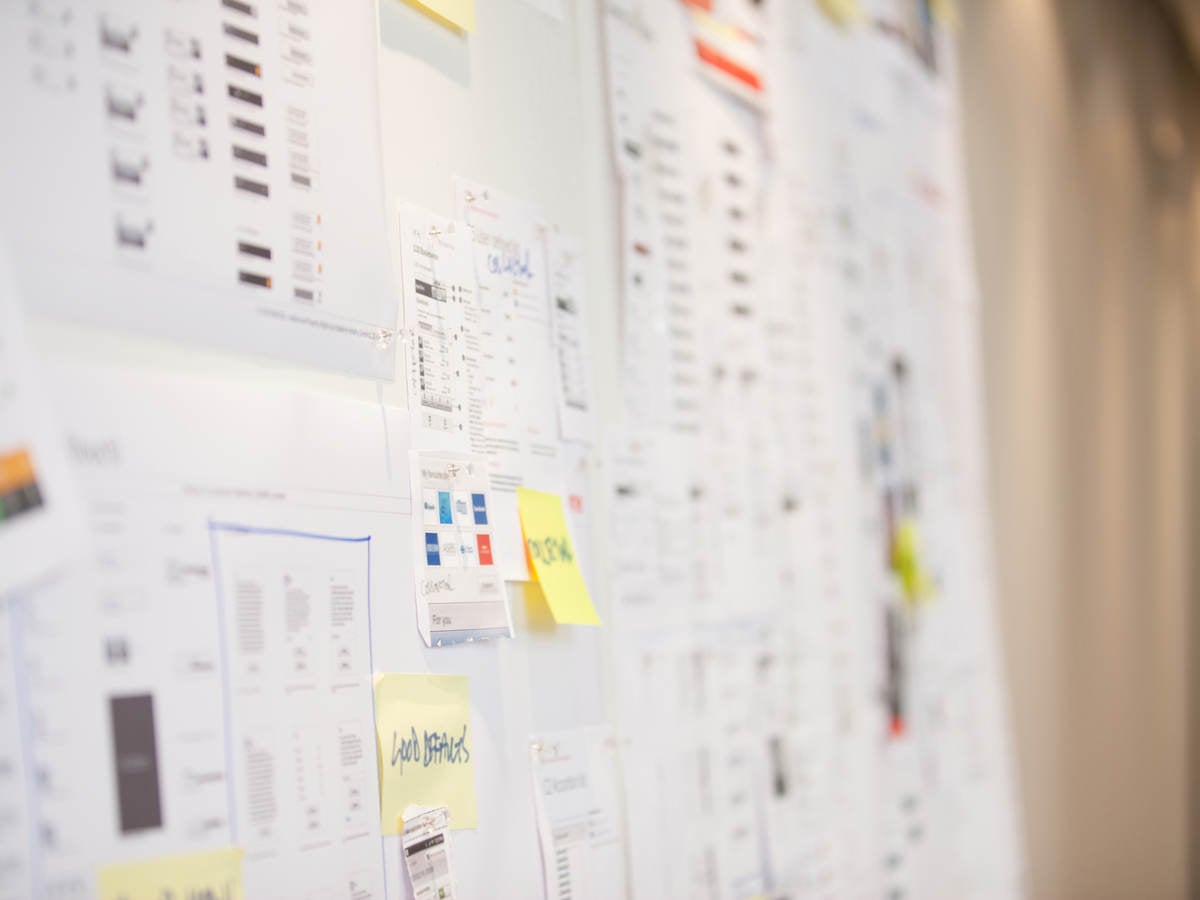September 21, 2023
By Cory Costantino and Julee Henry
On August 24, 2023, our Human Factors (HF) team’s Cory Costantino and Julee Henry delivered a webinar about how to approach early research, discovery and design during new product development efforts to build a strong user-centered foundation. They discussed what discovery is and why it is important, how to scope discovery to your research questions, and when and how to apply various analysis, research and design techniques.
Product discovery process
What is product discovery?
Some call it Phase 0. Some call it discovery. Some call it working at the fuzzy front end. We call it the best opportunity to uncover opportunities, identify users’ needs and establish the right direction for new product development. During early-stage product development, discovery can be used when the team is designing a new or next generation product; it can uncover untapped opportunities, develop a deeper understanding of the user and how they might use a product or establish a vision for a product’s strategy.
[H3] Benefits of the discovery phase
Discovery uncovers user-centered insights that drive downstream product development decisions to create safe and competitive products. With discovery, teams can:
-
build confidence in decisions made around product feature or interface design
-
generate deep knowledge about the user and context of use as an input to user requirements and UI design
-
create alignment amongst teams for the product’s vision
-
reduce downstream churn
If discovery is not conducted, or done haphazardly, product development teams might realize that incorrect assumptions led to pursuing the wrong products or features. The later those incorrect assumptions are uncovered, the more costly and time-consuming it can be to fix them. Risks of avoiding discovery include:
-
misunderstanding your users’ needs and behaviors
-
misunderstanding the context of how a product might be used
-
lacking a shared vision for success among stakeholders
-
missing opportunities to gain a competitive advantage
How to start the product discovery process
First, it’s important to establish a cross-functional team to collaborate with early and often. This generates diverse insights and helps all team members to feel vested in the outcome. Next, you’ll want to establish the scope of your key research questions, considering what you already know about the product landscape, user, context of use, and where and how you want to drive change. Lastly, it’s important to think about what decisions your team plans to make with the generated insights.
Here are three types of research questions you might encounter:
-
Exploring a next generation product. Perhaps you need a strategy to guide project prioritization or align business stakeholders to a common vision for your next product.
-
Understanding the product space. Perhaps you want to understand the opportunities in the product space to see where other products or your technology might fit.
-
Finding out what you do not know. Perhaps you want to survey the market landscape for underserved markets, identify emerging trends or determine where you can create a new trend.
Product discovery framework
Analysis, research and conceptualization techniques
There are many online resources that outline different techniques for HF analysis, user research and prototyping. During the webinar, keys to success in choosing and applying these methods were discussed, with some highlights below:
-
Summarize what you already know, using resources such as known problems analysis, competitive product benchmarking, design standards and guidelines, insights from staff who interact with customers (e.g., sales or training staff), and monitoring customer feedback
-
Think about what questions must be answered to make critical decisions. Use multiple techniques to triangulate insights from multiple perspectives.
-
Consider the time and budget constraints. For example, perhaps focus groups, rather than interviews, are within the budget and time constraints.
-
Consider the maturity of the product space. Do you have a user interface or product that can be evaluated? If not, that’s okay! Conceptualizations such as storyboards, or stimuli boards, can be powerful tools to orient participants in a particular context and generate conversation.
-
Don’t be afraid to get scrappy! Low-fidelity prototypes can be powerful for bringing ideas to life and quickly ruling out design aspects that do or don’t work well.
-
It’s never too early to start human factors analysis for product development! These early versions of known problems analysis, task analysis, and risk analysis can be powerful to identify innovative opportunities to lessen the burden on the users, predict use-related risk, and ideate design solutions.
Creating accessible artifacts for discovery phase
As your discovery phase ends, it’s important to create artifacts that are easy for stakeholders (e.g., business, engineering, marketing, design) to follow if/when the project continues to full development. As such, make your documentation and artifacts accessible, flexible, and easy to change as the team learns more. In this way, the themes of insights, design principles, design goals, preliminary concepts, and analysis of discovery will set a strong, confident foundation for future work.
Cory Costantino is Design Director and Julee Henry is Lead Human Factors Specialist at Emergo by UL.
Request more information from our specialists
Thanks for your interest in our products and services. Let's collect some information so we can connect you with the right person.






